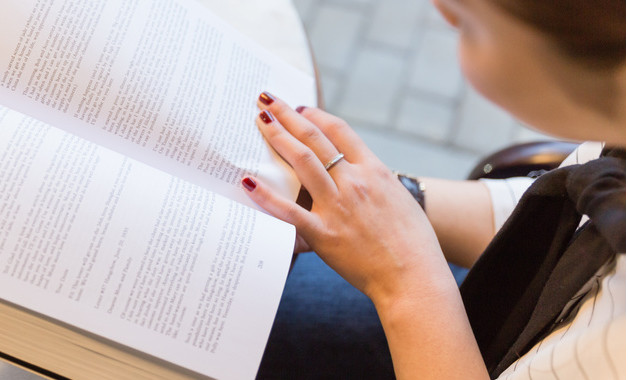
第1篇 初一下册英语知识点总结资料
unit 1 can you play the guitar ? 1、can+动词原形,它不随主语和数而变化。 (1)含有can的肯定句:主语+can+谓语动词的原形+其他。 (2)变一般疑问句时,把can提前:can+主语+动词原形+其他? 肯定回答:yes,主语+can。否定回答:no,主语+can't. (3)含有can的否定句:主语+can't+动词的原形+其他。 (4)含有can的特殊疑问句:特殊疑问词+can+主语+动词原形+其他? 2、may+动词的原形。(may为情态动词)一般疑问句是把may提前, 肯定回答是:yes,主语 +may。否定回答是:no,主语+mustn't。或please don't。 join+某个组织,俱乐部,party,参军,*派等 “加入” join sb. “参加到某人中” join in (doing)sth “加入做......,参加某个活动” join in=take part in +活动,比赛 3、说某种语言:speak+语言 4、play+球、棋、牌;play+the+乐器。 5、擅长于(做)什么:be good at +名词/动ing 6、帮助某人做某事:help sb. (to ) do sth. help sb. with sth. 7、我能知道你名字吗?may i know your name? 8、想要做什么:want to do sth 例如:i want to learn about art. 9、what club do you want to join? i want to join the chess club and the basketball club. 10、what club does tom want to join? he wants to join the swimming club . 11、he can’t play the violin or the piano. can you help kids with swimming? 12、why do you want to join the english club? because i want to learn english well. unit 2 what time do you go to school ? 1、what time和when引导的特殊疑问句。 (1)对时间提问用what time,也可以用when。询问钟点时用what time,询问日期、月份、年份时用when。 (2)询问做某事的时间时,两者可以互换。 (3)其他询问时间的句子: what's the time? =what time is it?现在几点了? 时刻表达法:顺读法和逆读法。 (1)顺读法:“钟点+分钟”直接读数字。 (2)逆读法:借助介词past或to表示,要先说分再说钟点。 a.当分钟不超过30分钟时(包括30分钟),即<或=30,用past表示。其结构为:“分钟+past+整点” 意为“几点过几分”。 b.当超过30分钟时,即>30,用to表示。其结构为:“所差分钟(即60—所 过分钟数)+to+下一个整点”,to译成“差”,差几分钟到几点。 c.当分钟为30分钟用half表示,当分钟为15分钟用a quarter。 2、always 总是>usually 通常>often常常>sometime 有时 3、watch+tv、球赛 “观看,观赏”,特指长时间注视。 see+电影、医生 “看见”,强调看的结果。 look “看”,强调看的动作,look后接宾语时要用介词at。 read+书刊、杂志 “阅读” 4、listen to +宾语 6、take a shower “淋浴” 7、eat breakfast 吃早餐 5、go to +地点名词 如:go to school go+地点副词 如:go home unit 3 how do you get to school? 一、本单元知识点总结 1.get to school 到校 2.take the subway 乘地铁 3.take the train 坐火车 4.leave for 到……地方去,离开去某地 5.take…to…把……带到…… 6. most students 大多数学生 7. from…to…从……到…… 8.think of 想到,想起 9.ride bikes 骑自行车 10.in other parts of the world 在世界的其他地方 11. how far 多远 (路程、距离) 12.how long多长(时间) 13.take the train to school 乘火车去上学 14.in places 在一些地方 15.go to school by boat乘船去上学 16.on the school bus乘坐校车 17.be different from和……不同 18.one 11-year old boy 一个十一岁大的男孩 二、重点知识详解 1.take +a/an/the+表示交通工具的名词,乘……去某地,是动词短语,在句中作谓语。 he takes the train. take the subway乘地铁 take a walk散步 take a shower洗个澡 take a rest休息一会 take a seat 坐下 take some medicine 吃药 2.by+表示交通工具的单数名词或on/in+ a/an/the/one’s+表示交通工具的单数名词,是介词短语作方式状语。 i get to school by bike. = i get to school on my bike. 3.walk/ride/drive/fly+to+地点名词,步行/骑自行车/开车/坐飞机去某地 表示乘交通工具方式可以互换表达相同的意义: take the bus to school=go to school by bus=go to school on a bus drive a car to work=go to work by car=go to work in a car fly to shanghai=go to shanghai by plane/air=take the/a plane to shanghai=go to shanghai on a/an/the plane. 4.get表示“到达”,后接名词需加to,接地点副词不加to. reach 给示到达,是及物动词,其后直接接宾语。 arrive in+大地点 arrive at +小地点 后接副词不需介词。 5. it takes sb some money/time to do sth.花费某人多少时间/钱做某事 sb pay some money for sth 某人为某物花费多少钱 sb spend some time/money on sth 某人在做某事或某物上花费时间/钱sb spend some time/ money (in)doing sth sth cost sb some money 某物花费某人多少钱 6. how far is it from a to b?=how far is b from a? 答语有两种:w ww.x kb 1.c om (1) it’s…meters/miles/kilometers(away)有……米/英里/千米(远) (2) it ‘s about ten minutes’ walk/ ride. 大约有十分钟步行/骑车的路程。 7have to 后加动词原形,侧重客观的需要,有“不得不,被迫”之意,有多种时态形式,否定式为don’t have to(needn’t)意为“不必”。 must 侧重于说话者的主观看法,认为有必要或有义务做某事,只有现在时一种形式,否定式must’t意为“一定不要,不允许,禁止”反意词为“needn’t”。 8.感谢用语:thank you very much , thanks a lot , many thanks. 三、语法归纳 (一)how 引导的特殊疑问句 1.how 引导的特殊疑问句提问交通方式,其答语分三种情况: a. take a/an/the+交通工具(单数) b. by+交通工具(单数) c. on/in+限定词+交通工具 2. how far 用来提问距离,多远,其答语分为两种: (1)用长度单位表示:it is five kilometers. (2)用时间表示:it’s twenty minutes’ walk. 3.how long 用来提问时间,意为多久回答常用“for+段时”。 ----how long have you learnt english? ----for 3 years. how soon 用来提问做完某事还需要多长时间, 常用于将来时态时, 常用“in+时间段”来回答。 ――how soon will you arrive in beijing? ----in 3 hours. unit 4 don’t eat in class 肯定的祈使句: (1) 实义动词原形+其他; (2) be动词原形+形容词+其他; (3) let sb do sth. 否定的祈使句: (1) don’t+实义动词+原形; (2) don’t be+形容词+其他; (3) don’t let sb do sth (4) no+ving. 练:(1) my mother said to me, “tom, _______ in bed.” a. not read b. doesn’t read c. don’t read d. didn’t read (2) don’t __________ (fight). = no __________ (fight). 2. 不要迟到:don’t arrive late. = don’t be late. (arrive = be) 上课/上学不要迟到:don’t arrive (be) late for class/school. 3. 主语省略(无主语):don’t arrive late for class. 主语不省略(有主语):we can’t arrive ;ate for class. 4. 在学校我们必须穿校服:we have to wear uniforms at school. 句型:不得不/必须做某事:have to do sth 否定:不必做某事:don’t have to do sth 穿校服:单数:wear a uniform 复数:wear uniforms a. can b. may c. must d. have to 5. 在我家里有太多的规矩:i have too many rules in my house. 词组:太多…:too many… 6. 我从来没有任何快乐:i never have any fun. (never译为“从来没有”,表示否定,否定句中表示“任何,一些”,用any) 7. 不要大声说话:don’t talk loudly. 请大声说:speak loudly, please. 8. 他擅长于唱歌:he is good at singing. 句型:擅长于做某事:be good at doing sth 9. 表示“地点”的词组: (1) 在教室里:in the classroom 在课堂上:in class (2) 在走廊上:in the hallways 在学校里:at school = in school 10. 表示“时间”的词组: (1) 下课后:after class 放学后:after school (2) 在上学的白天/晚上:on school days/nights 比较:at night (3) 到晚上10点钟之前:by 10 o’clock p.m. 11. (1) with 和; 如:he lives in beijing with my parents. (不能用and) (2) with 戴着; 如:do you know the fat man with a hat? (不能用wears) (3) with 有着; 如:it’s an old house with a beautiful garden. (不能用has) unit5 why do you like pandas? 1. –让我们先去看考拉。-- let’s see the koalas first. (first翻译为“首先”) –你为什么最喜欢考拉?-- why do you like koalas best? (best翻译为“最”) --因为它们很可爱。-- because they are very cute. 句型:让某人做某事:let sb do sth 2. –你为什么不喜欢老虎?-- why don’t you like tigers? --因为它们有点吓人。-- because they are kind of scary. ① 在此处,表示“不”,只要在do后加not即可。 ② 有点…:kind of+形容词 = a little+形容词 3. 你还喜欢别的什么动物? what other animals do you like? (后有animals, other不加s) 你喜欢和别的年轻人工作吗? do you like to work with other young people? this isn’t my sweater. it’s __________ (you). are all these children __________ (you)? 4. 他是一个8岁的男孩:he is an 8-year-old boy. (后有名词boy, 用连字符,year用原形) 他8岁:he is 8 years old. (后无名词boy, 不用连字符,岁数大于1,year变复数) 5. 请保持安静:please be quiet. = please keep quiet. (keep译为“保持”,= be) 6. 他每天通常睡和放松20个小时:he usually sleeps and relaxes 20 hours every day. 每天:every day (要分开) 连在一起的everyday翻译为“日常的”,是个形容词。 7. 和某人玩:play with sb (倒翻) 8. 在白天:during the day = in the day 在此处,during = in 9. 在晚上:at night = in the evening 在上学的晚上/白天:on school nights/days 10. 吃草:eat grass 吃叶子:eat leaves (leaf的复数形式) 吃肉:eat meat 11. 相似单词比较:(1) 草:grass (不可数,无复数) (2) 玻璃:glass 复数:glasses 眼镜 12. 汉语:因为…,所以… 英语:because…, so… (不能同时出现在一个句子中) 汉语:虽然…,但是… 英语:though…, but… (只能使用其中一个) 如:_______ tom is tired, _______ he wants to have a food rest. a. because, so b. though, but c. /, so d. /, but 13. (1) first num. 第一; 如:sunday is the first day of a week. (2) first adv. 首先;首先:at first 如:let’s see the koalas first. 14. (1) best adv. 最; 如:why do you like koalas best? (2) best adj. 的; 如:who do you think is the best teacher in your class? 15. (1) very adv. 非常(放在形容词前); 如:the koalas are very cute. (2) very much 非常(放在动词后); 如:thank you very much. 16. (1) kind(s) of n. 种类; 如:there are many kinds of anmals in the zoo. what kind of noodles would you like? (2) kind of = a little adv. 有点;(无形式变化) 如:he is kind of lazy. (3) kind adj. 和蔼的,友善的; 如:it’s kind of you to help me with my english. 17. 树叶:leaf 复数:leaves 变化规则:去f加ves; 18. 小偷:thief 复数:thieves 变化规则:去f加ves. unit6 i’m watching tv 1. 现在进行时的结构:主语+be+ving. (be动词和动词+ing两者缺一不可) 考题形式:(1) 已知be动词,考后面的动词形式(要加ing); (2) 已知后面的动词+ing, 则前面用be动词。 如:(1) the boy is _________ (run) with his father. (2) some children are __________ (lie) on the grass. (3) my brother and i are __________ (play) soccer. (4) his sister is __________ (read) a book. 2. --你正在做什么?-- what are you doing? --我正在看电视。-- i’m watching tv. 3. 那听起来很棒:that sounds great/good. 4. 谢谢你的信和照片:thanks for your letter and the photos. ① 谢谢某东西:thanks for sth ② 句型:谢谢做某事:thanks for doing sth 5. 这是我的一些照片:here are some of my photos. (“一些照片”是“复数”,be用are) 这是我的一张全家福照片:here is a photo of my family. (“一张照片”是“单数”,be用is) 6. 句型:忙于做某事:be busy doing sth 如:his brother is busy _________ (write) stories in his room. 7. 表示“活动”的“动词词组” ① 做家庭作业:do one’s homework ② 打扫房间:clean the room ③ 吃晚饭:eat dinner ④ 打电话:talk on the phone = make a telephone call ⑤ 看书/看报/看杂志:read books, read newspapers, read magazines ⑥ (学生)上课:have an english class (老师)上课:give an english class ⑦ 举行晚会:have an evening party ⑧ 和某人说再见:say goodbye to sb 8. 在购物中心:at the mall 在游泳池:at the (swimming) pool 在学校:at school 在体育馆里:in the gym 9. 在第一张照片中:in the first photo 在第二张照片中:in the second photo 在下一张照片中:in the next photo 在最后一张照片中:in the last photo 10. 等汽车:wait for the bus 在汽车站等(某人):wait (for sb) at the bus stop 11. 我的兄弟和我:my brother and i (要把“我”放在后面) 12. (身体)好,健康:well = fine 如:-- how is your mother? -- she is _______. 13. 活动:activity 复数:activities (以辅音字母+y结尾的,去y加ies) 玩具:toy 复数:toys (以元音字母+y结尾的,直接加s) 14. (1) 也:also 用于“肯定句的句中”; (2) 也:too 用于“肯定句的句末,前加逗号”; (3) 也:either 用于“否定句的句末,前加逗号”。 15. (1) show n. 节目;如:tv show, sports show, game show, talk show (2) show v. 给…看;如:can you show me your family photo? i’ll show you the way. (3) show v. 表演;如:can you show us beijing opear? 一般现在时 the simple present tense 一般现在时表示现在的状态 ;表示经常性或习惯性的动作;表示主语具备的性格和能力等。例如: 1、he is twelve. 他十二岁。2、i go to school at seven every day. 3、they speak japanese. 一般现在时常和表示时间频度的副词连用。如:often, usually, sometimes, always, never, hardly ever等。 1. i often read books in the evening. 2. do they usually go to school by bike? 3. he doesn’t like milk. he never drinks it. 4. sometimes my mother gets back at five. 一般现在时常和以下时间表达法连用。如:in the morning, in the afternoon, in the evening, at noon, at night, every day, on sunday(s), at seven 等。 do they have math in the morning? she sleeps nine hours every night. it takes me two hours to do my homework every day. they don’t have classes on sundays. 它有三种形式: 一、谓语是be的一般现在时。 1、肯定形式是:主语+be+表语(形容词、名词充当表语)。 2、否定形式是:主语+be+not+表语(形容词、名词充当表语)。 3、一般疑问句是:be+主语+表语(形容词、名词充当表语)? 肯定回答是:yes,主语+be. 否定回答是:no, 主语+ be+not. 4、特殊疑问句是:特殊疑问词+be开头的一般疑问句? 注意:be要随着主语变。 二、谓语是情态动词can/may.....+动词原形的一般现在时。 1、肯定形式是:主语+情态动词can/may.....+动词原形+宾语。 2、否定形式是:主语+情态动词can/may.....+not+动词原形+宾语。 3、一般疑问句是:情态动词can/may.....++动词原形+主语+宾语。 肯定回答是:yes,主语+情态动词. 否定回答是:no, 主语+ 情态动词+not. 4、特殊疑问句是:特殊疑问词+情态动词can/may.....开头的一般疑问句? 注意:情态动词can/may.....+动词原形。 三、谓语动词是实义动词及物动词或不及物动词的一般现在时。 1、肯定形式是:“主语+及物动词+宾语”或“主语+不及物动词”。 2、否定形式是:“主语+don't/doesn't+及物动词+宾语”或 “主语+don't/doesn't+不及物动词”。 3、一般疑问句是:“do/does+主语+及物动词原形+宾语”或 “do/does+主语+不及物动词原形”。 肯定回答是:yes,主语+do/does. 否定回答是:no, 主语+ don't/doesn't. 4、特殊疑问句是:特殊疑问词+do/does开头的一般疑问句? 注意:根据主语确定用do还是does。 动词第三人称单数的构成:(用于第三人称单数、可数名词的单数和不可数名词的一般现在时中) 1、直接加--s look—looks read—reads play—plays stop—stops 2. 在字母s, x,ch,sh,o后加--es miss—misses fix—fixes watch—watches wash—washes go—goes do--does 3. 辅音字母加y结尾的动词变y为i,再加-es carry–carries study–studies hurry–hurries cry–cries 4.特殊的 have -- has 现在进行时 (1)构成形式:be动词+动词的ing形式 这里强调一点,两者缺少其中任何一种都不可以构成现在进行时。 (2)现在进行时表示动作正在进行或事情正在发生。 (3)有用的依据:一个句子中既有be动词,又有动词,且动词加了ing ←→ 该句是现在进行时 (4)句中往往有now、look、listen等词。 动词现在分词的变化见下表: 词尾情况 变化方式 例词 一般情况 加—ing play玩—playing do做—doing go去—going jump跳—jumping sing唱—singing ski滑雪—skiing see看见--seeing 以不发音的e结尾 去e加—ing make做—making take拿到—taking write写—writing dance跳舞—dancing have有—having close关—closing 以重读闭音节结尾的动词,中间只有一个元音字母,词尾只有一个辅音字母 双写最后一个辅音字母再加—ing swim游泳—swimming sit坐—sitting run跑—running get得到—getting put放—putting begin开始—beginning jog慢跑—jogging 同音词: too---two----to buy---by i---eye four----for there----their right----write sun----son no----know here---hear who’s----whose 近义词: many----a lot of / lots of large----big desk----table photo---picture lamp----light like----love open----close black----white here----there 完整形式:let’s=let us(让我们) i’d=i would can’t=can not i’m=i am 词性变换:one(序数词) first monkey(复数)monkeys skiing(原形)ski is(复数)are families(单数)family make(现在分词)making we are(缩略形式)we’re do(第三人称单数)does have(第三人称单数)has photo(复数)photos good(反义词)bad 做题目时一定要记住: can+动词原形 like+动词ing like+名词复数 play+足球类 play the +乐器类 how many +名词复数 would like +to+动词原形 let’s+动词原形 现在进行时:be(am,is,are)+动词ing 动词第三人称单数形式
第2篇 人教版初一下册英语知识点总结
unit 1: how often do you exercise? 复习目标 会使用频率副词及短语; 能描述课余时间的活动安排; 会描述基本饮食结构。 语言目标 ● what do you usually do on weekends? i sometimes go to the beach. ● how often do you eat vegetables? every day. ● most students do homework every day. 重点词汇 ● always, usually , often, sometimes , hardly , ever, never. ● how often, once , twice , three times a week , every day. ● milk, junk food, health, unhealthy, habit, exercise, most, result, try, different maybe, although, arm, foot, tooth, ear, eye, advice, thirsty ,forget, finish, plan . 应掌握的词组 1. go to the movies 去看电影 2. look after = take care of 照顾 4. healthy lifestyle 健康的生活方式 5. go skate boarding 去划板 6. keep healthy=stay healthy 保持健康 7. exercise=take(much)exercise=do sports锻炼 8. eating habits 饮食习惯 9. take more exercise 做更多的运动 10. the same as 与什么相同 11. be different from 不同 12. once a month一月一次 13. twice a week一周两次 14. make a difference to 对什么有影响 15. how often 多久一次 16. although = though虽然 17. most of the students=most students 18. shop=go shopping=do some shopping 购物 19. as for至于 20. activity survey活动调查 21. do homework做家庭作业 22. do house work做家务事 23. eat less meat吃更少的肉 24. junk food垃圾食物 25. be good for 对什么有益 26. be bad for对什么有害 27. want to do sth 想做某事 28. want sb to do sth想某人做某事 29. try to do sth 尽量做某事 31. of course = certainly = sure当然 32. get good grades取得好成绩 33. some advice 34. hardly=not nearly / almost not几乎不 35. keep/be in good health保持健康 36.be stressed紧张的,有压力的 37. take a vacation 去度假 48.get back 回来
第3篇 初一下册英语知识点总结沪教版
学习目标:
1.学会描述并谈论天气
2.描述正在发生的事情-----学习现在进行时的用法
3.学会描述在不同的天气背景下能做什么
4. 表达自己对天气的喜好并说明原因
语言功能:
描述天气,描述正在发生的动作
语言目标:
how’s the weather? it’s raining.
how’s it going? it’s great.
is aunt sarah there? yes, she is.
what’s she doing? she’s cooking.
语言结构:
how 引导的特殊疑问句
yes/ no 问句及简短回答
现在进行时的用法
重点词汇:
raining, sunny, cloudy, snowing, windy, cold, hot, cool, warm, humid, cooking, playing, watching, studying
学习策略与思维技巧:言语配合,调用已知信息
多元智能:人际交往,逻辑表述,肢体表达能力
一.短语:
1 take photos/ pictures 照像
2 take photos/ pictures of sb/ sth 给某人或某物照相
3 have a good timehave funhave a great tame 玩得愉快
4 work for sb / sth 为某人工作 eg: yuan yuan works for cctv’s around the world show
5 on vacation 度假 eg: there are many people here on vacation.
6 some…others… 一些…另外一些… one…the others…一个…另一个…(两者之间)
eg: there are many students in the classroom. some are writing, others are reading.
7 put on 穿上(动作) wear 穿着(状态) eg: tom is putting on his coat now.
8 on the beach 在沙滩上 eg: tom and his family are playing on the beach at this moment.
9 this group of people 这一群人
10. in this heat
二.重点句型
1.how is the weather? 天气怎么样? in the raining. 在下雨。
2.what are you doing? 你正在做什么? i'm watching tv. 我在看电视。
3.what are they doing? 他们在做什么? they are studying. 他们在学习。
4.what is he doing? 他在做什么? he is playing basketball . 他在打篮球。
5.what is she doing ? 她在做什么? she is cooking . 她在做饭。
三.重难点解析
1、 询问天气情况的句式:(横线内容可替换)
① how is the weather in beijing? (how is the weather today?)
② what’s the weather like in beijing? ( what’s the weather like today?)
2、 回答上面问题的句式:
①it’s + adj. (形容词) eg: it’s windy.
3 、how’s it going (with you)? ① not bad. ② great! ③ terrible! ④ pretty good.
4、 thank you for joining cctv’s around the word show.
5、 i am surprised they can play in this heat.
6、 everyone is having a good time.
7、 people are wearing hats and scarfs.
① wear 指穿衣服的状态。 ② put on 指穿衣服的动作。please put on your old clothes
四.谈论天气的日常用语
1. it’s sunny/rainy/cloudy. 今天是晴天/雨天/阴天。
2. lovely weather, isn’t it? 天气真好,是吗?
3. it looks like rain. 看起来要下雨。
4. it’s raining cats and dogs. 正是瓢泼大雨。
5. it seems to be cleaning up. 天似乎要转晴。
6. it’s blowing hard. 风刮得很大。
7. it’s snowing heavily. 正在下大雪。
8. the snow won’t last long. 雪不会持续太久。
9. it’s very foggy. 雾很大。
10. the fog is beginning to lift. 正在收雾。
11. it’s thundering and lightening. 雷电交加。
12. what’s the weather like today? 今天天气怎么样?
13. what’s the weather report for tomorrow? 天气预报明天怎么样?
14. it’s quite different from the weather report. 这和天气预报相差很大。
15. it’s rather changeable. 天气变化无常。
16. what’s the temperature? 温度是多少?
17. it’s two below zero. 零下二度。
18. the temperature has dropped a lot today. 今天温度低多了。









